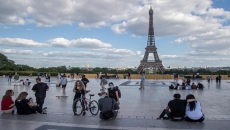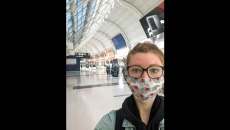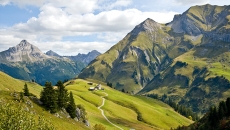Americans have never been more ready to get out of the house and bask in the sun. Warm-weather beach destinations are the most popular vacation searches, with Florida — particularly Key West — Myrtle Beach, South Carolina, and San Diego among the top considerations.
According to Tripadvisor, 50% of travellers are looking to book a one- to five-day trip this month, suggesting massive pent-up demand for sand and surf. But the craving for a beach getaway coincides with recent spikes in coronavirus cases in nearly half the states, including beach havens like Florida, Texas and the Carolinas.
The good news for beachgoers is that 83% of beaches are now open — up from only 56% two weeks ago, according to the National Recreation and Park Association. Experts agree that outdoor activities are relatively low risk because the air helps disperse virus particles, as long as you follow basic precautions.
“It is not going to be your typical summer at the shore. Most beaches are going to have restrictions around physical distancing,” said Allison Colman, director of health for the National Recreation and Park Association.
Common changes include parking restrictions to control crowds, limits on leisure activities like sunbathing, and nixing coolers, chairs, umbrellas and other gear. Beach rules vary widely by city and county, and visitors should check their destination’s regulations before heading out.
In New York City and its suburbs, state beaches are fully open with swimming, though some picnic areas remain off limits, and parking areas on the busiest days may close early to reduce crowds. Beaches run by the city itself are also open, but swimming is barred.
State beaches are open for swimming and sunbathing in Connecticut, where officials have urged people to keep 15 feet (4.5 metres) between blankets, and many parking lots are at reduced capacity. New Jersey’s public beaches also reopened at reduced capacity and some are not selling daily badges.
In California, most beaches, including popular ones in Los Angeles County, are now allowing sunbathing and swimming. Some are maintaining bans on staying in one place, but allow exercise or crossing the sand to reach the water.
Beaches also reopened in Miami this month banning groups of more than 10 people, requiring social distancing of 10 feet (3 metres) or more and forbidding canopies. Masks must be worn when social distancing might be difficult.
In many areas, “beach ambassadors” are strolling the sand to enforce social distancing. Nearly 50% of agencies are using park rangers, law enforcement or other staff to disperse crowds, Colman said.
If you’re downwind from groups of people, even if you’re more than 6 feet (2 metres) apart, respiratory droplets can be blown, putting you at greater risk, said Dr. Shawn Nasseri, a Beverly Hills, California, ear, nose and throat specialist.
If it’s not crowded, it might be safe to enjoy a beach day without a mask with a small group, and ideally bring your own towels, toys, chairs and food. If you need to rent equipment, just make sure to use a disinfectant wipe.
“The caveat is that people cannot be packed like sardines on the beach. They can’t be sitting on top of each other,” Nasseri said.
If the parking lot is full or the beach looks packed, experts advise picking another beach or coming back at off-peak hours like weekday mornings and evenings.
Trickiest to navigate are high-traffic areas like parking lots and narrow ramps to and from the water. Wearing a mask is advised.
“People have that quarantine fatigue in LA and other coastal cities, and literally they’re saying, ‘forget it’ ... that’s when we’re seeing bumps,” Nasseri said.
Nivek Divincci has been to Miami Beach a half dozen times since it reopened more than two weeks ago and calls it a natural stress reliever.
“The breeze, the ocean, the sound of the waves, the sand — everything about it makes it feel like you’re in a better place,” said the 20-year-old real estate agent.
On most visits, he’s gone with his roommate or a few other people, practiced social distancing and felt safe, except once.
“It was crowded and people were breaking the guidelines ... no masks,” he said, noting that the groups starting getting larger. “They were touching each other 24/7 and they were even sharing drinks at one point.”
Nasseri says a car-ride getaway is safe as long as vacationers follow social distancing at fuel stops, stay at hotels following CDC guidelines for sanitation, and stick to takeout meals to avoid crowds.
___
For more information on how to go to the beach safely see this advice from the Centers for Disease Control and Prevention: https://www.cdc.gov/coronavirus/2019-ncov/community/parks-rec/public-beaches.html.
__




